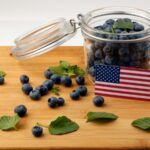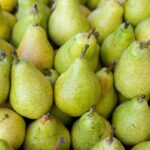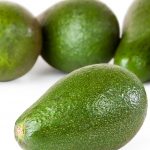Opinion: Pros and cons of club varieties

By AgFirst horticultural consultant John Winton
 This article was originally published in Australian Fruitgrower magazine and has been republished with permission.
This article was originally published in Australian Fruitgrower magazine and has been republished with permission.
Since the Australian apple industry trade marked the new Western Australian-bred variety, Cripps Pink, some t30 ago as Pink Lady® and developed the concept of a ‘marketing club’ for the variety, the majority of new variety introductions have been managed as club varieties.
Club varieties usually involve a branded IP-protected trade mark and some form of licensing of businesses involved in growing and marketing the product. Ideally this evolves into a brand.
Trees usually carry a royalty charge, and to fund the administration of the club and its role in protecting the brand there is an additional royalty payable to the brand owner when a business uses the brand to sell the fruit..
Some club varieties are licenced to a single marketing entity, which is the case with the T&G varieties Jazz™ and Envy™.
For others, of which for the international market Pink Lady is probably the best example, the trademark is held by an organization which then licenses a number of businesses around the world to grow and market fruit under its trademark so long as they fulfil their contracted requirements under the conditions of the licence.
Pink Lady as the forerunner
Internationally, Pink Lady has been highly successful, with plantings of the parent cultivar (Cripps Pink) now comprising 2.23% of world apple plantings excluding China.
The Pink Lady trademark is owned by APAL and managed through a network of businesses licensed to apply the trademark to fruit and then market the brand within specific territories.
APAL’s Head of Global Brand Craig Chester reports that the global volumes of Pink Lady-branded product traded exceed 600,000 metric tons (MT) with an estimated retail value of around $2 billion.
The critical mass of Pink Lady has generated a pool of funds for investment in promotion of the brand at levels which capture consumer awareness equal to many of the big retail grocery brands.
Funds are also used to protect against any unlicensed use of the trademark, maintenance of quality standards, as well as running APAL’s commercial operation which manages the global brand.
Department of Agriculture and Food Western Australia (DAFWA) hold the original Plant Variety Rights (PVR or PBR) protection of the Cripps Pink variety developed within their breeding program.
They have assigned PBR to select international companies who act as agents for the variety and enjoy the protection benefits these rights afford them.
Higher color sports of the original variety have since been found that have gained PVR which extend the protection. Two of these, Rosy Glow and Lady In Red, have been accepted by APAL to be marketed under the Pink Lady brand.
The success of Pink Lady has been due to a number of outstanding features which differentiated it from other varieties at the time. These were:
- Its unique blush.
- Good sugar acid balance.
- Exceptionally good storage and in particular its shelf life out of storage.
The other critical factor was being the first apple to be managed as a sophisticated brand – developing strict guidelines for the design and use of the brand and the creation of promotional materials to accompany the release of Pink Lady into the market.

High-color sports are now raising color standards: Lady in Red is on the left, standard Cripps Pink on the right.
Long-term success with club apples
For continued success, a trademarked variety must maintain a high standard product specification, and product uniformity so that what the consumer receives is up to expectation and doesn’t disappoint.
Steve Spark, in his June 2017 Future Orchards® walk summarised the desirable traits of a successfully managed club as:
- Well funded with big investment early on to establish the variety.
- Market establishment and branding.
- Grower manual to enable the product to meet product specification.
- Storage optimisation.
- Maximising the variety performance and market potential.
- Continuing research and development to fine tune the product, and solve any condition issues which inevitably arise with any new variety.
- Variety has unique attributes to make it stand out from the crowd e.g. taste, colour, texture, fruit size, harvest timing and storage behaviour.
- Discipline to maintain quality standards.
- Strong marketing/leadership skills and actively striving for price premiums and a strong market presence.
Pink Lady has met all the requirements and as a result, even after almost 30 years in the market still maintains a good premium over unbranded commodity varieties.
Over the years, particularly once high color sports were found, quality standards, particularly in regards to color, have lifted. This has undoubtedly helped maintain its market premiums and expand its market penetration into markets that demand higher color than its initial target markets.
Product which does not meet the Global Pink Lady Quality Specification which governs such traits as colour, pressure, brix and defects, can be packed as Cripps Pink. This has undoubtedly helped maintain Pink Lady as a high specification product. As a rule, returns from Cripps Pink product, has been around half that of Pink Lady.
Other club varieties worth considering
While Pink Lady can be viewed as the oldest and most successful club variety on the international market, there are a number of others that have been successful.

Unbranded Cripps Pink with poor color and a huge range of it. Nearby Pink Lady® was priced at about 1.6 times the price shown above.
These include Honeycrisp® in the USA where production is now above 8 million cartons.
According to former apple breeder at Washington State University Bruce Barrett, this is the level above which increasing volumes would lower prices on that market. Yet prices for Honeycrisp remain high.
Others include the T&G varieties Jazz™ and Envy™, also Smitten™, Ambrosia™, Rockit®, Kanzi™, as well as high colour sports of well-established commodity varieties e.g. the branded Fuji varieties Kiku®, Morning Mist™, and some branded Royal Gala types.
These branded commodity varieties, like Pink Lady relative to Cripps Pink, command a significant price premium over the non-branded variety. Only time will tell how successful branded commodity varieties will be in the future.
The key for their future, like premium wine labels will be how successful their promoters are at maintaining the quality specification that differentiates them from their unbranded siblings.
Being a club variety does not guarantee success
Looking into the future we can be pretty certain that most new variety releases will be following the trademarked branded path pioneered internationally by Pink Lady. None will however enjoy the first mover advantages gained by Pink Lady.
With over 80 apple breeding programs around the world, the branded new variety scene will become a very crowded place so we can anticipate some club variety failures.
It’s also probable that most will become small volume niche players rather than the high-volume success that Pink Lady has become internationally. Perhaps most importantly, the model for most club varieties is built upon managing or limiting supply to maintain price. Consumers on the contrary expect brands (as in packaged goods) to be available and consistent year round. Pink Lady’s model uniquely allows for both.
For many club varieties, obtaining the necessary initial funds to successfully launch them has been a huge hurdle to overcome. Many have tried to fund them out of current market returns which, in my opinion, is not the best way forward, because in the early days of a variety volumes are too small to raise the necessary funds.
This way of funding cuts into grower returns too much, making them unprofitable to grow, which limits planting progress so if they do manage to build a profitable expanding market the volume is not there to capitalise on the opportunity.
It also means that the pioneer growers have sacrificed their early orchard income potential to launch the variety so later adopters will benefit but not necessarily have made the initial royalty contributions to the owner/manager that were required for the variety to become successful.
To avoid this problem a way of capitalizing the initial marketing investment, which can be huge relative to income, needs to be found so that future production pays its fair share of the variety’s start-up costs.
Ownership of the brand, and their ability to finance and discipline their licensees’ behavior in regard to market pricing and strict adherence to fruit quality and grade standards, apart from the desirable attributes of the variety itself, is the most important criteria for the long-term viability of a club variety.
Different ownership models
There are a number of options for ownership of the brand. The international Pink Lady model, which allows growing and marketing the brand through a system of multiple licensees, has been successful and this has undoubtedly been due to the strength of APAL in managing the brand, and maintaining very good discipline among its licensees through effective forums such as the International Pink Lady Alliance (IPLA).
APAL was one of the first to establish a branded variety which gave it significant marketing advantage. It also did a very good job of promoting the variety to orchardists, so was able to build critical mass quickly and establish a strong revenue stream.
With the large number of potential branded varieties we now have, success is much harder to achieve with this model unless trademark ownership is in the hands of a well organised, disciplined and funded umbrella organization.
Where initial volumes are likely to be small, and the variety in the niche market category, a single licensee with good international partners may be a better model because this approach focuses on variety development and marketing effort and will be more likely to provide sufficient reward for the sole licensee to make it worth their while to make the necessary effort.
It is my observation that this path has given better results than the multiple trademark ownership model. Examples in apples include the T&G varieties Jazz™ and Envy™, and Zespri varieties in kiwifruit.
Think global for viability
Taking the long-term view, the Australian market is probably too small to support many branded club varieties so to be successful a variety club needs to be thinking globally. This means seeking IP protection around the world which is very expensive.
It’s also necessary to establish northern hemisphere partners to share the burden and provide the market with a year-round supply of high quality fresh fruit.
Up until now, many commodity open market varieties have been very successful. Examples include Royal Gala, Fuji, Granny Smith and initially Braeburn. In my opinion, the commodity open market model is now past its use by date.
Braeburn, which is fundamentally a very good apple when harvested at correct maturity, does not have the worldwide appeal of Royal Gala, so did not take long to follow the path of the open variety price production.
Braeburn production has now more than halved leading to price recovery to the point where the variety is now profitable again, but probably nowhere near as profitable as it would be now if it had been a well-managed club variety and not suffered the overproduction price slump it experienced.
The fact that we are now seeing high specification branded club varieties emerging for Royal Gala and Fuji is a clear indication that the days of the open variety model are coming to an end.
Trademarked club varieties are definitely the way of the future. Eventually, open varieties without volume control and good quality management become commodity varieties where buyers are free to set price and force grower returns down to what the weakest seller is prepared to accept.
Without good quality management programs it’s difficult for a consistent product to be supplied, leading to loss of buyer and consumer confidence.
The other point to recognize is that for a trademarked variety club product only fruit which meets the club’s stringent specifications should be sold under the trademark to maintain its premium price position. This does not mean that there cannot be a differentiated lower value outlet for fruit that does not meet the club’s stringent quality requirements. In the international market, APAL allows lower specification Cripps Pink to be sold as Cripps Pink.
The APAL’s Future Orchards library has further information on this topic and in particular I refer to Steve Spark and Jonathan Brookes’ June 2017 Future Orchards field walk presentation.
















































